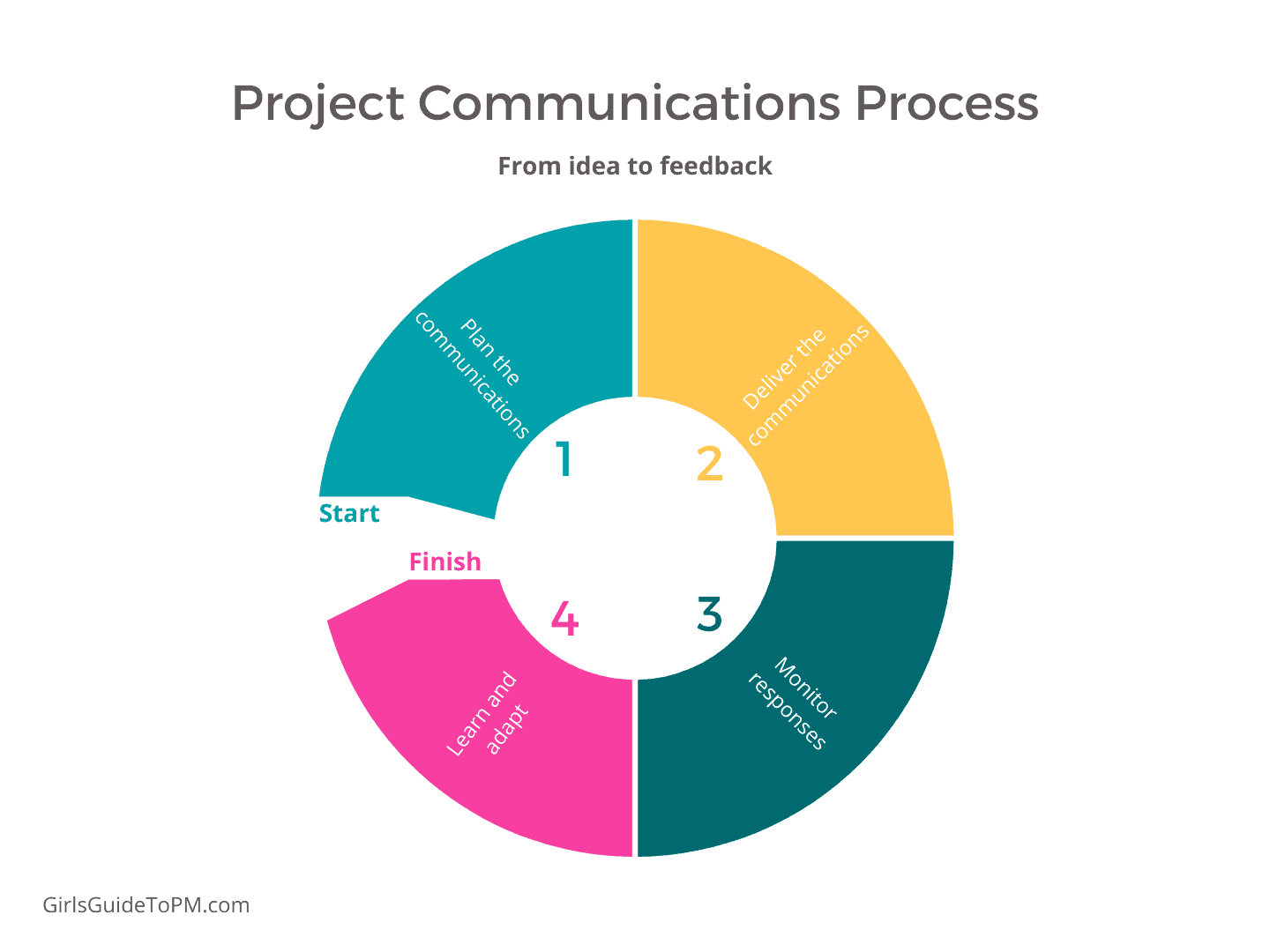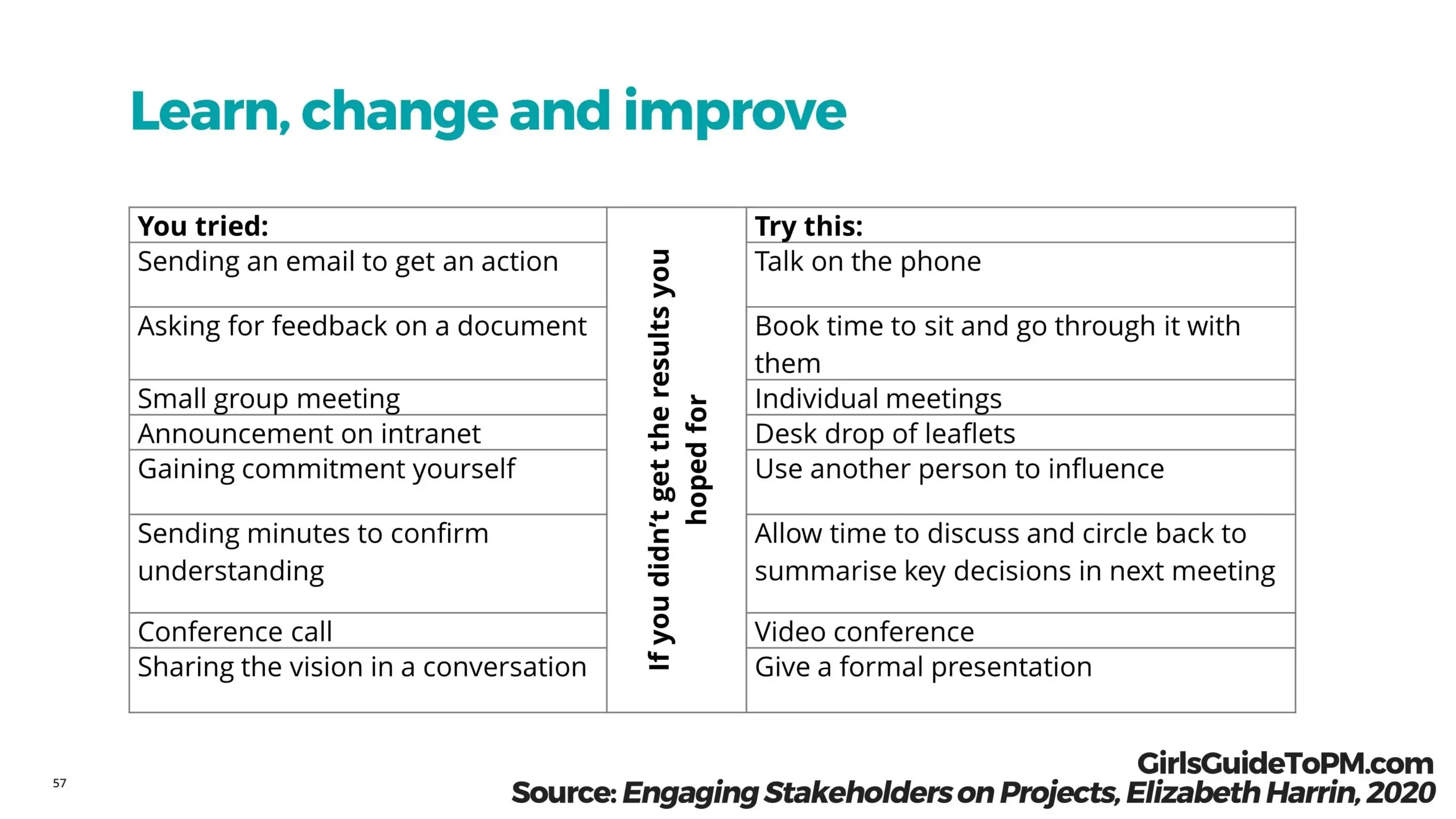Project Communication Management: What is it all about?
Did you know that 56% of your project budget might be at risk due to poor communications?
Perhaps that number (from research by PMI) surprises you, but I’m sure you aren’t surprised by the fact that good communication management on projects leads to higher success rates.
We know that all projects use finite resources to achieve an objective. One of the most valuable resources in a project is the people (developers, engineers, subject matter experts, etc.) who support it.
But just how does a savvy project manager ensure that work is completed in a predictable, efficient and less stressful way?
Project managers will use multiple tools and techniques at different times, but project communication management is one that it used throughout a project.
This article is a guide to project communication management. You’ll learn why it matters, see an overview of the communications process, and get some examples of where you might apply it on your own projects.
What is project communication management?
At a high level, project communication management ensures that key information flows efficiently and in a predetermined way between the various people working on (or impacted by) a project. What they do with the information varies, and some may just need awareness of information versus taking a specific action based on it. However, having a plan for how to share information throughout a project’s lifecycle is critical to project success.
How much communication should you do?
Depending on who you ask, project managers spend anywhere from 60% – 90% of their time on communication with the various people on their projects. Whew, that is a lot of your time!
To explain why communication is so crucial, consider the
n (n-1) / 2
In this formula, n is the number of people on the project.
Using this formula, a team with 10 people would have 10 (9) / 2 or 45 communication channels. No wonder communication takes so much of our time!
Why project communication matters
I recall a story shared by a project manager who worked on an international consulting project. He took over responsibility from the previous project manager part way through the project.
During the transition, he focused on a smooth transition for the project team at the home office. One detail that was overlooked was reestablishing regular communications with a key stakeholder in a different country.
As a result of this oversight, a project complaint (escalation) occurred after the transition and included specific concerns around project communication. Although communication was occurring, the perception of the stakeholder was that communication was not being properly managed because he felt unintentionally “left out.”
The concern was ultimately addressed along with a plan update to include all key stakeholders. During the project’s lessons learned session, managing communication updates during and after a team member transition was recognized as an area in need of some improvement.
The key takeaway is that project communication management should occur throughout a project’s lifecycle, especially when a transition occurs.
When project communication happens
Here are some of the more common meetings where project communication occurs during a project:
- Project kickoff meeting
- Presentations for clients, customers, or other stakeholders
- Executive updates, written briefs and presentations
- The daily standup, or weekly or monthly status meetings in person or via Teams, Zoom, video chat etc
- Milestone meetings to discuss progress, project risks, and determine path forward
- Review meetings to periodically present and get acceptance on project deliverables
- Lessons learned meetings or retrospectives.
You can probably think of other times where you are communicating with people on a project. After all, it’s a large part of what you do all day! Effective project managers spend most of their time communicating in one way or another.
I like to talk about project managers being the glue that holds the team together, and we do that through discussion, conversation, facilitated meetings and chat.
The communications management process
Communications management occurs in a well-defined and repeatable cycle. Here are the 4 steps of the communications process along with a bit of information to explain each one.

1. Plan
At or before kickoff, the project manager proposes a communication plan and seeks input from team members and stakeholders. The plan outlines who will provide communication, how information will be issued, the frequency, and what action(s) are expected. The intent is to ensure that all team members and stakeholders know what to expect from each other during the project.
As part of communication planning, a project manager should perform some degree of stakeholder analysis to answer some key questions:
- Who – the stakeholders impacted by the project and who will expect updates and information
- What – their expectations of the project, what they want to “know” about the project
- Why – why the project matters to them
- Influence – their respective influence on the project’s resources and outcomes (low / medium / high)
Understanding stakeholders is critical because how to communicate, what they expect, and how to manage them varies according to these factors. You should adapt the plan with everyone in mind, but provide special consideration for the most influential people.
You will also need to consider the frequency and detail preferred by the most influential stakeholders so that you can meet their expectations from the beginning.
You will also want to consider who should receive information, who may provide information /input before communication is issued, and how to send that information.
Get the project communications plan template I use to plan my project communications
If you want to try something different, read this case study on using video for project communications.
2. Do
Once planning is done and the project starts, the communication really begins!
This step is all about action – issuing meeting minutes, providing reports, and documenting proposed changes as agreed. Your biggest responsibility here is to ensure that all commitments are met on time and to the agreed level of expectation.
There are numerous examples where project communication supports other project management processes. Just to expand on that a bit, here are a few examples of where that might typically occur:
- Stakeholder engagement – provides a general awareness of project status, issues, concerns, and required action or support needed for project success.
- Progress monitoring and reporting – helps through regular overview of project progress, accomplishments, path forward, and next steps.
- Key decisions documentation – provides a mechanism for documenting and distributing key decisions with the project team for future reference.
Team building – helps a project team establish and maintain trust through regular communication, discussions around issues and concerns, and getting to know each other.- Expectations management – sets the tone and details for how communication will flow, when who will receive it, and criteria for taking appropriate action (if needed).
- Transition and
change management – ensures that team members and stakeholders are aware of any proposed changes, their potential impact, and aligned in their support of changes.
3. Monitor
In this step the project manager seeks input from the team and stakeholders, along with feedback. Are people looking for more information, less, or doing something different from what was agreed?
A direct conversation or survey can be helpful to understand if needs are being met and any area(s) that may need adjustment.
4. Change
Based on feedback from the Monitor step, incorporate feedback and adapt the plan as needed. The goal here is to ensure that expectations are fully aligned with how communication is occurring.
Learn from what works and what doesn’t, then make the appropriate changes so the team can improve the way comms are done.
For example, if you don’t get the required response from an email, pick up the phone. There are more examples of how you can switch up your communications in the table below.

How much does project communication cost?
Project communication costs vary depending on the project. If you are hosting community events, that’s going to cost more than providing an internal team with a quarterly PDF newsletter.
However, you can do your stakeholder communication on a budget (there are ideas for cheap ways to communicate here).
Regardless, it is worth spending the money on getting project comms correct. According to PMI’s report into the Essential Role of Communication, effective communication is associated with a 17% increase in finishing projects within budget.
In other words: investing in comms pays off because you are more likely to hit your financial targets and prevent overspending.
Communication skills for project managers
Project communication requires different skills for maximum effectiveness.
Here are the top communication skills for project managers:
- Active listening: really hearing what people are saying in the room
- Consistency: follow through when you say you will and create a cadence for the team
- Clarity: use short sentences and
jargon -free language in your communications - Accessibility: make sure comms are delivered in a format that works for everyone
- Respect: treat your audience with respect and consideration.
Another important skill is public speaking – Toastmasters is a great way to improve. Look for a chapter near you, or simply volunteer to present to groups at work.
Your next steps
Projects are a big responsibility and may seem overwhelming at times. Thankfully, there are tools and techniques that can help us break things down to make them more manageable.
The details of project communication management may vary according to your own style and preferences. Regardless of your project size or industry, communication will play a big role from beginning to end and can help you deliver your projects with success.
Your action steps are:
- Have you got a communications plan? If not, download my template and create one.
- Review your stakeholder list and ensure everyone is on there who needs to be
Good luck and happy communicating!
Pin for later reading:

